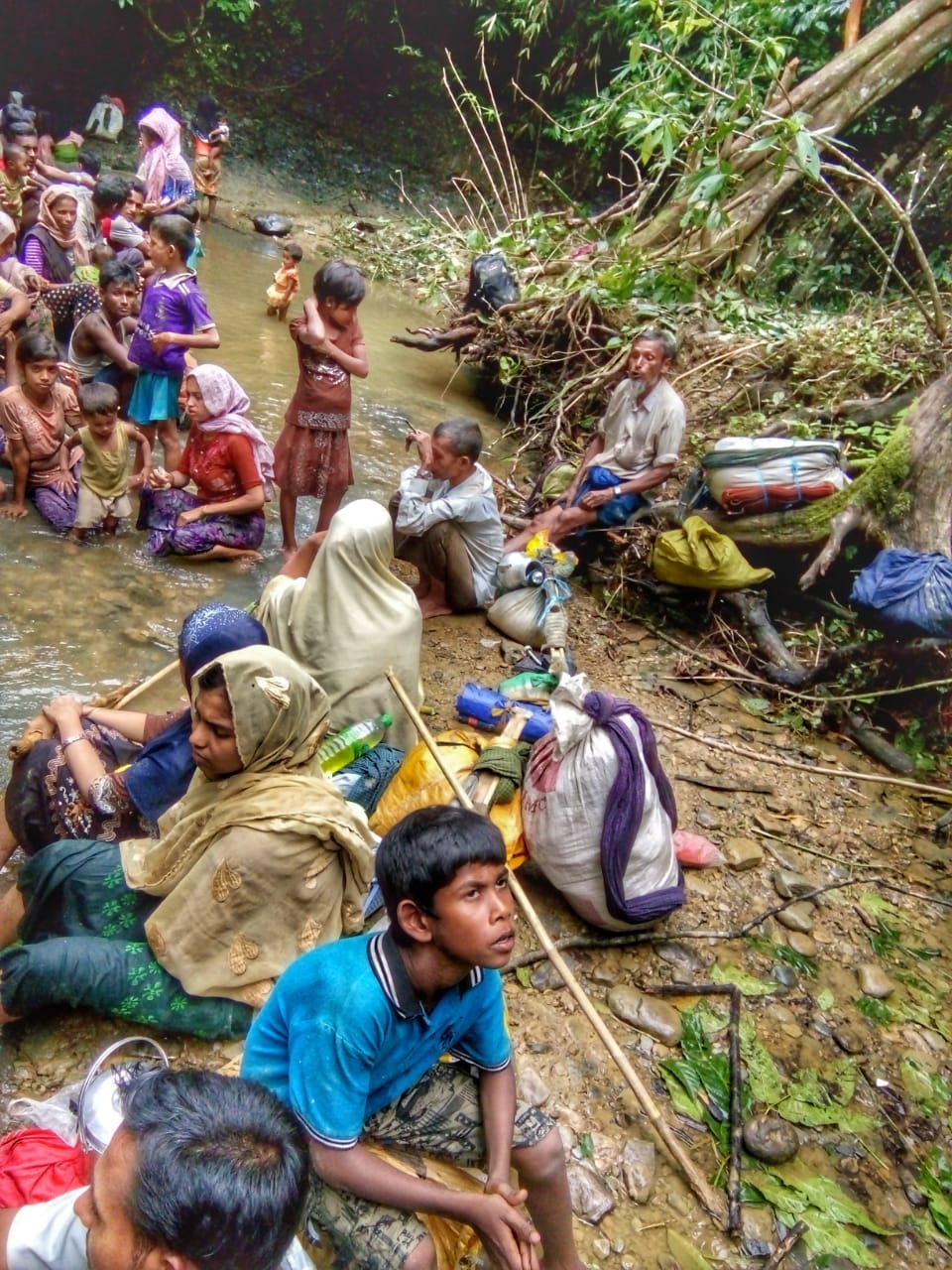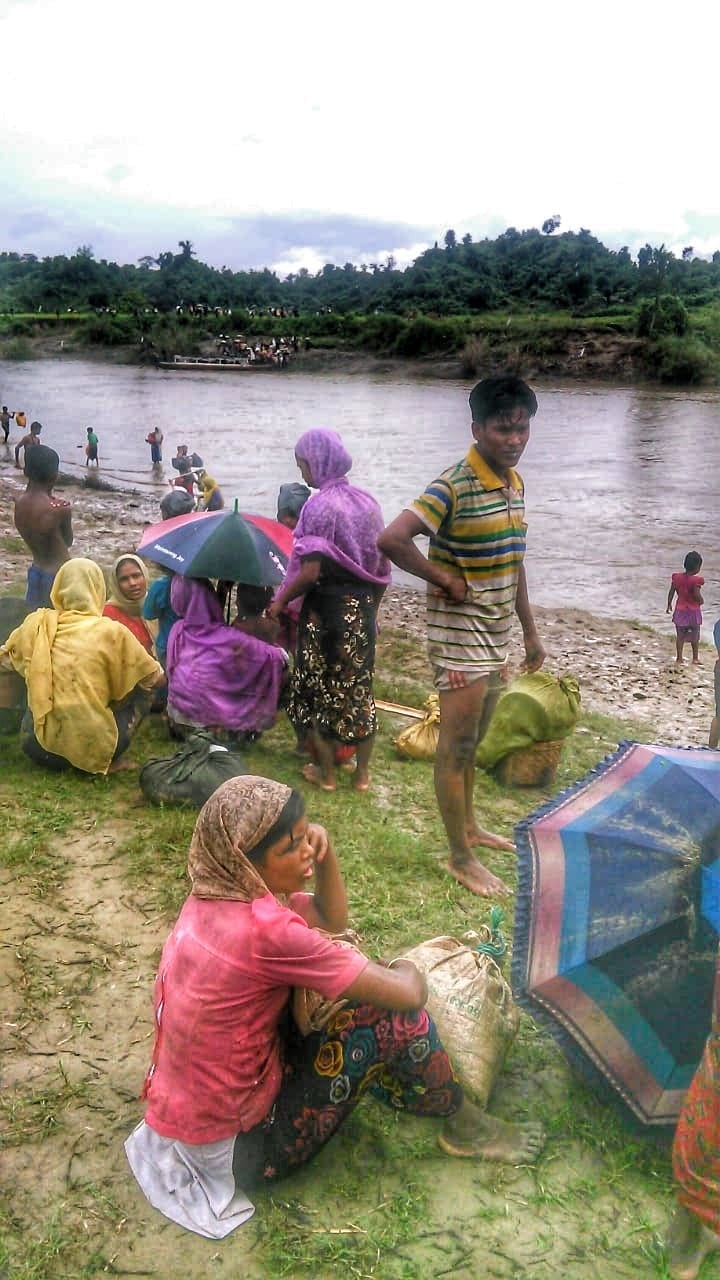In late August 2017, Zonun Hubait and his family fled their village of Ngaying Chaung in Buthidaung, Myanmar and headed for Bangladesh. The catastrophic Myanmar military "clearance operations" had started in Northern Rakhine State. The Myanmar military proceeded to drive out hundreds of thousands of Rohingya into Bangladesh, and killed thousands in the process. They destroyed over 200 villages. Indeed, in the space of a few weeks, nearly 800,000 Rohingya were made refugees.

Zonun's village is in the Taung Bazaar area. Taung Bazar attracted media attention when in 2020 two Myanmar military deserters confessed to various human rights abuses in the area, including rape and killing of men, women and children.
For the Rohingya, the confessions have been described as a "rare moment of vindication after years of denials and victim-blaming from Myanmar."
VIDEO: Zonun's video of hundreds of residents of Ngaying Chaung fleeing.
Despite the dangers and difficulties, Zonun took some images and videos of the difficult circumstances he and his fellow villagers faced. It took Zonun and his family a total of 15 days to reach Bangladesh on foot, finally arriving on 10 September 2017. During the journey, food was always a challenge. Zonun's family took some dried foods with them when they left, including a packet food usually distributed by ACF (Action against Hunger) to those suffering from malnutrition - Plumpy nut. Zonun's had the foresight to take a bundle along with him.

Zonun's photograph of villagers crossing the Mayu River is on exhibition at the Museum of Trust & Dialogue for the Mediterranean in Lampedusa, Italy. The photograph taken with a mobile phone shows an overladen boat bringing fleeing Rohingya from one side of the river to the other. The landing is difficult and muddy and an outstretched hand motivates the people to move forward. It also beckons the viewer to witness the unfolding tragedy.
Below is another view of the river crossing near Copper Bazar. Zonun, now 24, is a refugee in Bangladesh.

